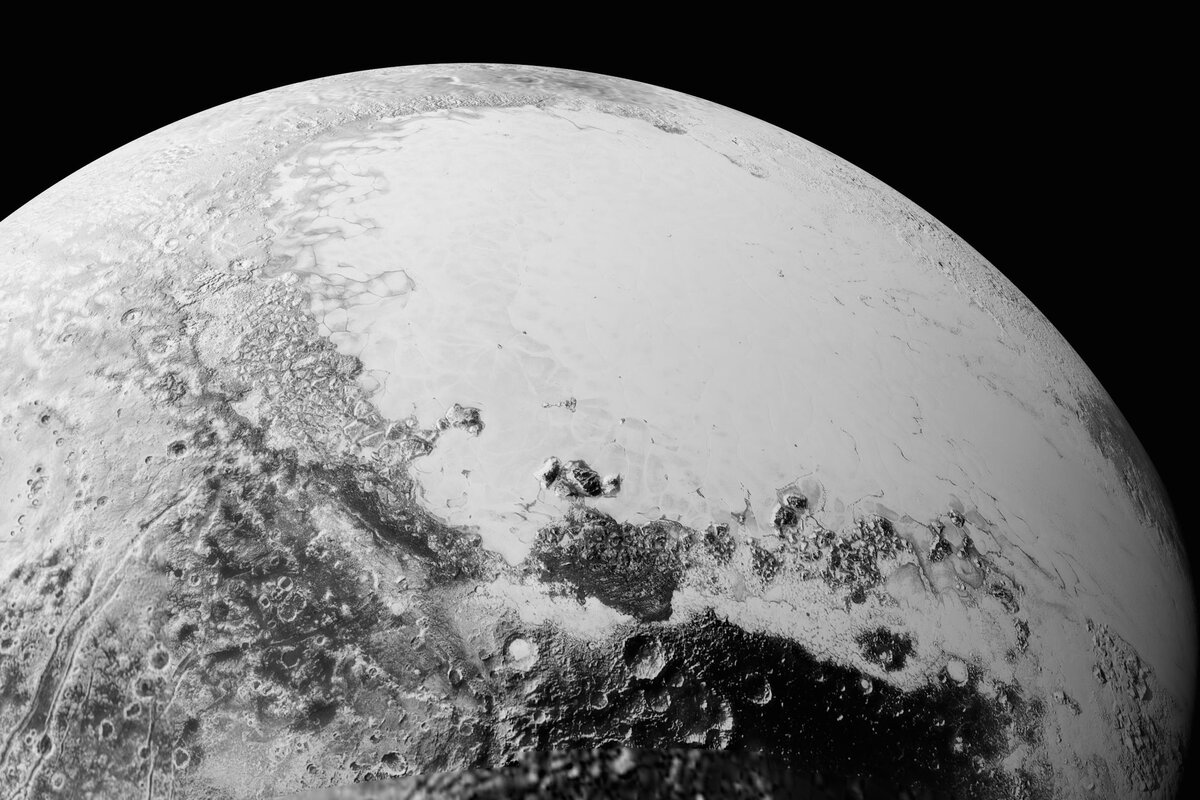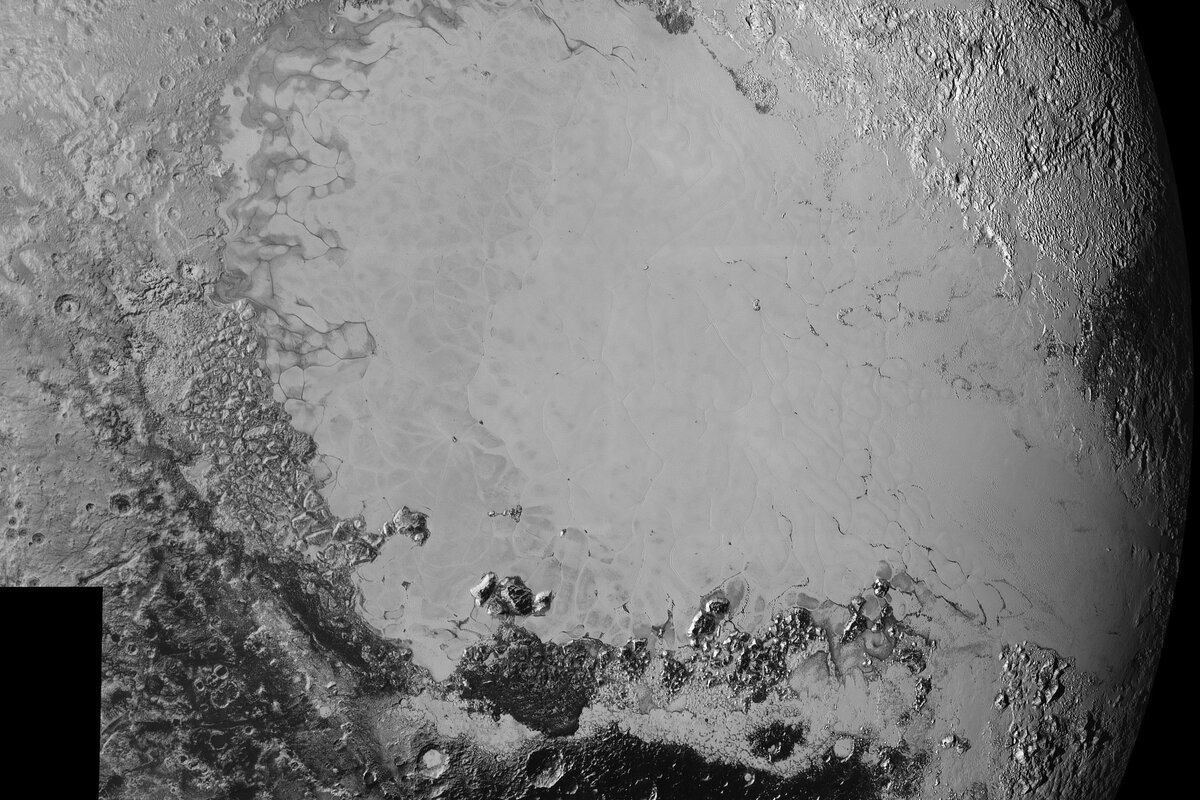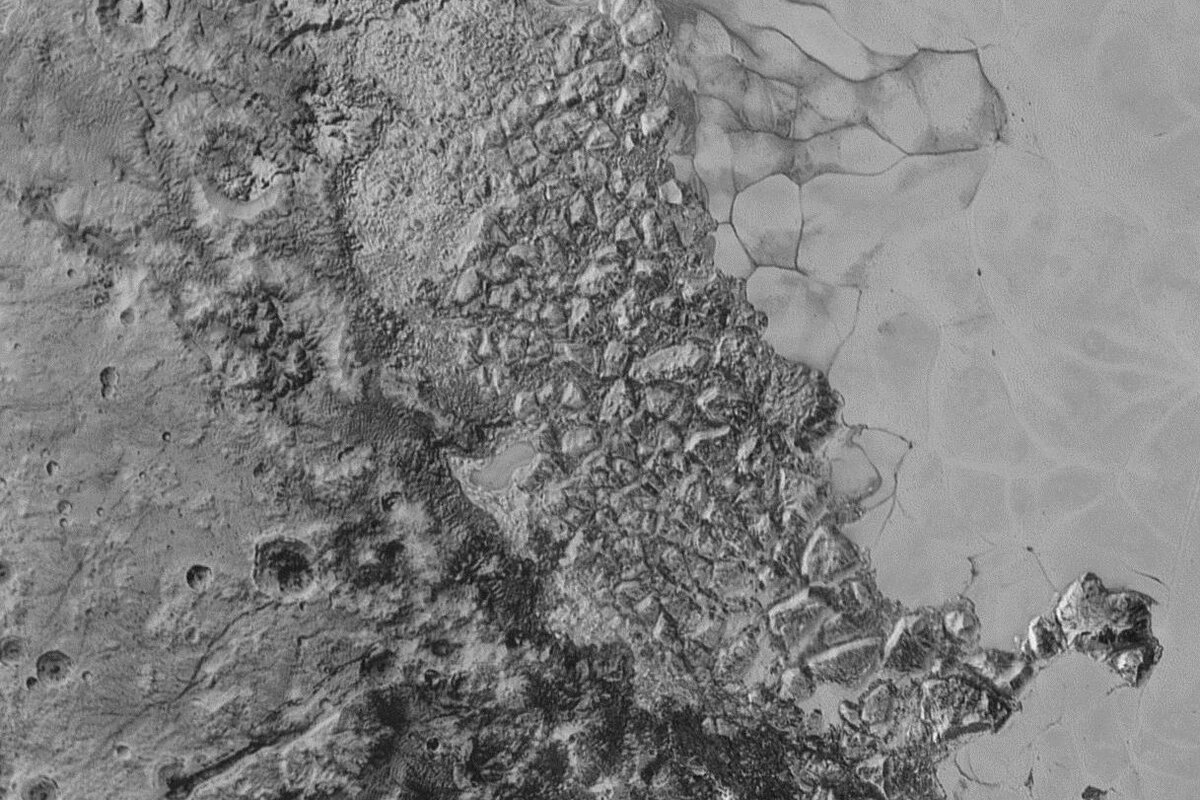New Pluto images arrive: Are those dunes?
Loading...
The trove of images of Pluto captured by NASA's New Horizons spacecraft is getting even larger – and more detailed. The latest round of photos shows the dwarf planets surface in the sharpest detail yet.
The spacecraft sent some images back immediately after its historic flyby of Pluto on July 14, but the majority were stored for later transmission.
The sheer amount of data captured by New Horizons, coupled with the roughly 3 billion mile distance it must travel, means it could take a full year for the craft to complete transmission, according to . The latest arrivals offer stunning views of some of Pluto's craters, but New Horizons researchers are even more excited about what's still to come.
"What’s coming is not just the remaining 95 percent of the data that’s still aboard the spacecraft – it’s the best data sets, the highest-resolution images and spectra, the most important atmospheric data sets and more," Alan Stern, New Horizons’ principal investigator, . "It’s a treasure trove."
The close-up, never-before-seen images are already painting Pluto in a new light. The new images show Pluto’s surface at resolutions of 440 yards per pixel. New, diverse features of the planet are distinguishable, including a twilight view of Pluto – the dwarf planet’s global atmospheric haze illuminates the surface at night, allowing further visibility.
“If an artist had painted this Pluto before our flyby, I probably would have called it over the top — but that’s what is actually there,” Dr. Stern said in the NASA press release
One shot suggests that Pluto's icy plains might even include dunes, a geological feature that scientists did not expect to find.
“Seeing dunes on Pluto – if that is what they are – would be completely wild, because Pluto’s atmosphere today is so thin,” said William B. McKinnon, a GGI deputy lead from Washington University, St. Louis in the NASA release. “Either Pluto had a thicker atmosphere in the past, or some process we haven’t figured out is at work. It’s a head-scratcher.”
New Horizons also captured images of Pluto’s moons Charon, Nix, and Hydra. Those images should arrive Friday and be released to the public.








